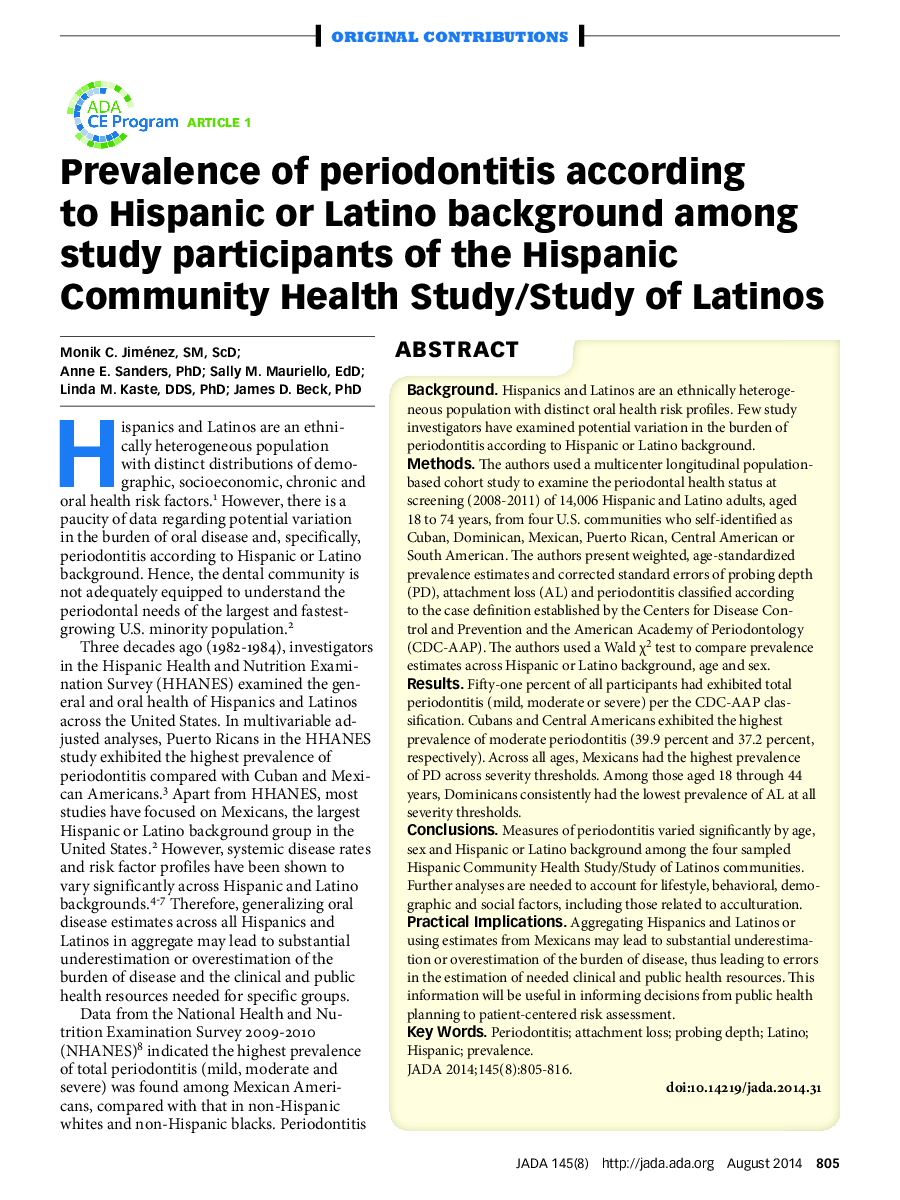| Article ID | Journal | Published Year | Pages | File Type |
|---|---|---|---|---|
| 3137082 | The Journal of the American Dental Association | 2014 | 12 Pages |
ABSTRACTBackgroundHispanics and Latinos are an ethnically heterogeneous population with distinct oral health risk profiles. Few study investigators have examined potential variation in the burden of periodontitis according to Hispanic or Latino background.MethodsThe authors used a multicenter longitudinal population-based cohort study to examine the periodontal health status at screening (2008–2011) of 14,006 Hispanic and Latino adults, aged 18 to 74 years, from four U.S. communities who self-identified as Cuban, Dominican, Mexican, Puerto Rican, Central American or South American. The authors present weighted, age-standardized prevalence estimates and corrected standard errors of probing depth (PD), attachment loss (AL) and periodontitis classified according to the case definition established by the Centers for Disease Control and Prevention and the American Academy of Periodontology (CDC-AAP). The authors used a Wald χ2 test to compare prevalence estimates across Hispanic or Latino background, age and sex.ResultsFifty-one percent of all participants had exhibited total periodontitis (mild, moderate or severe) per the CDC-AAP classification. Cubans and Central Americans exhibited the highest prevalence of moderate periodontitis (39.9 percent and 37.2 percent, respectively). Across all ages, Mexicans had the highest prevalence of PD across severity thresholds. Among those aged 18 through 44 years, Dominicans consistently had the lowest prevalence of AL at all severity thresholds.ConclusionsMeasures of periodontitis varied significantly by age, sex and Hispanic or Latino background among the four sampled Hispanic Community Health Study/Study of Latinos communities. Further analyses are needed to account for lifestyle, behavioral, demo- graphic and social factors, including those related to acculturation.Practical ImplicationsAggregating Hispanics and Latinos or using estimates from Mexicans may lead to substantial underestimation or overestimation of the burden of disease, thus leading to errors in the estimation of needed clinical and public health resources. This information will be useful in informing decisions from public health planning to patient-centered risk assessment.
